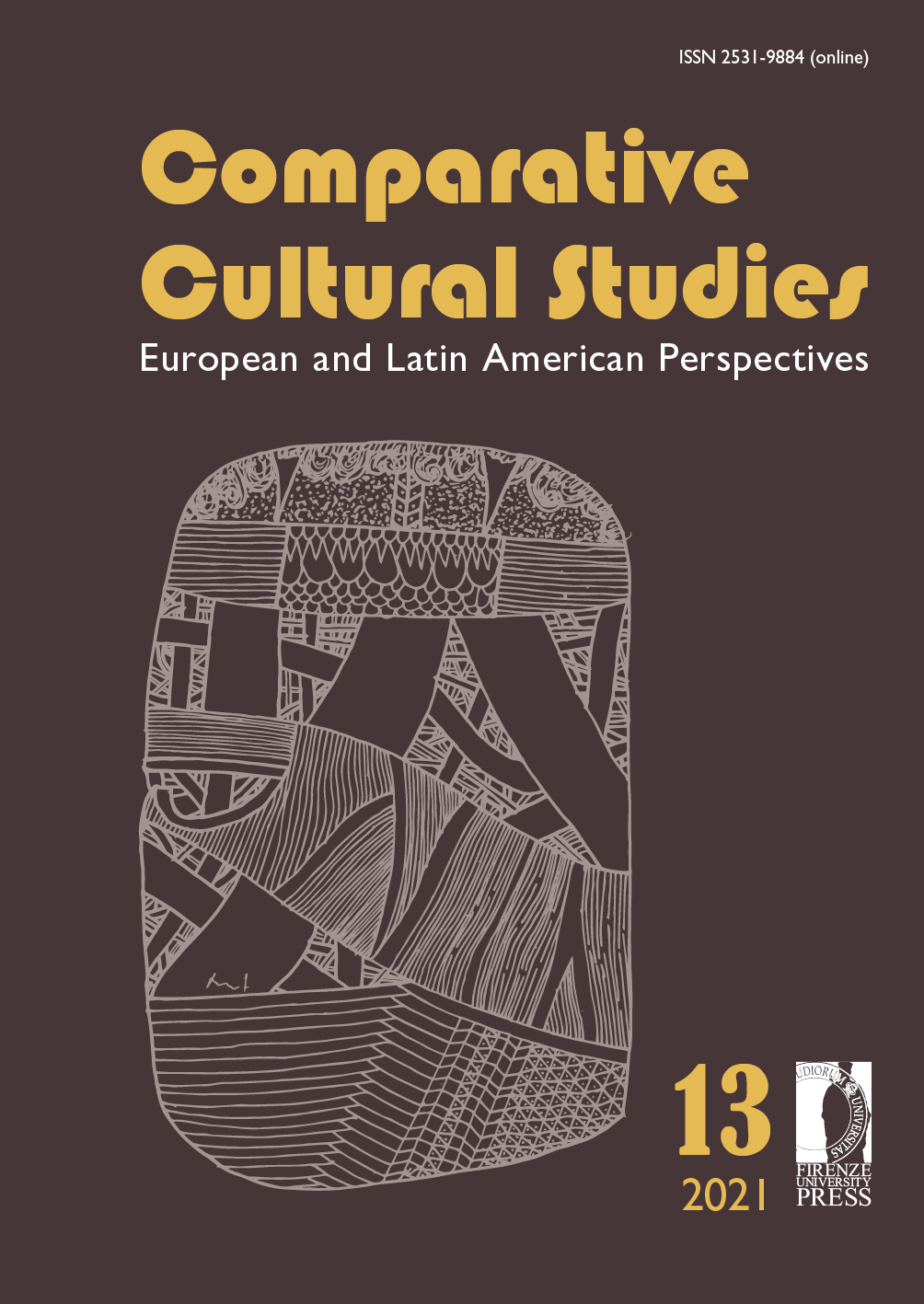Comunità da remoto. Il laboratorio della diaspora cristiano-ortodossa davanti alla pandemia
DOI:
https://doi.org/10.36253/ccselap-12766Keywords:
Christian Orthodoxy, Covid-19, Diaspora, Multi-sited ethnography, Religion and pandemic, Lockdown and restriction measures, Digital turnAbstract
This paper pledges to illustrate and analyse the practices and measures that Eastern European Orthodox Christian communities in the diaspora implemented in response to the global phenomenon of the SARS-CoV-2 epidemic. A comparative study of two different West-European communities, in Italy and France, will be attempted through the tools of multi-sited participant observation. We will illustrate the alternative forms of reaction and re-aggregation implemented by the faithful and their priests by putting them in communication with the two local contexts, and with the overall dynamics that have affected contemporary Orthodoxy. Observation will therefore offer fruitful opportunities to investigate the semantic variations with which Orthodox communities translate the debate between tecno-scientific measures and religious dogmas, and between civil and religious authorities, in a scenario in which orthodox migrants are protagonists of both a growing religious transnationalization, and a new everyday life regulated by epidemic risk and physical and social distancing. We will therefore focus on the production from below of new practices, which have readjusted the community belonging and the adherence to dogmas and traditional rituality, both central in Orthodox Christianity, to the current condition.
Downloads
References
Augé, M. (1984). Ordre biologique, ordre social, in Le sens du mal: anthropologie, histoire, sociologie de la maladie, (a cura di) M. Augé, C. Herzlich, Paris: Archives Contem-poraines, 195–213.
Bausinger, H. (2020). Volkskultur in Der Technischen Welt, trad. it. Cultura popolare e mon-do tecnologico, (a cura di) L. Renzi, P. Clemente, Pisa: ETS.
Belting, H. (2011). Bild-Anthropologie. Entwürfe für eine Bildwissenschaft, trad. it. Antropo-logia delle immagini, (a cura di) Salvatore Incardona,Roma: Carocci Editore.
Boellstorff, T., Nardi, B., Pearce C., Taylor T.L. (2013). Ethnography and Virtual World: A Handbook of Method, Princeton: Princeton U.P..
Burrell, J. (2009). The Field Site as a Network: A Strategy for Locating Ethnographic Research, Field Methods, 21,181–199.
Capponi, G., Carneiro Araújo, P. (2020). Occupying New Spaces: the “Digital Turn” of Afro-Brazilian Religions During the Covid-19 Outbreak, International Journal of Latin American Religions, 4, 250–258.
Carnevale D. N. (2018). Frumuseţea Dumnezeului. Pratiche del bello ed esperienza del sacro nella ritualità ortodossa moldava. in AA.VV. La bellezza salverà il mondo, (a cura di) A. Nesti, Siena: Cisreco – Religion and society,135–148.
Carnevale D. N., Girneata S.F. (2018). Aspettative e bisogni delle comunità religiose a Bolo-gna – Le chiese ortodosse, Bologna: Comune di Bologna – AMITIE code.
Csordas T. (1990). Embodiment as a Paradigm for Anthropology, Ethos,18, 5–47.
De La Torre R. (2012). Religiosidades nómadas. Creencias y prácticas heterodoxas en Gua-dalajara, Messico: CIESAS.
De Martino E. (1977). La fine del mondo. Contributo all’analisi delle apocalissi culturali, Torino: Einaudi.
Green, N. (1999) Disrupting the field: Virtual reality technologies and “multisited” ethno-graphic methods, American Behavioral Scientist, 43 (3), 1999, 409–421.
Hämmerli, M., Mayer J.F. (a cura di), (2014). Orthodox Identities in Western Europe: Migration, Settlement and Innovation, Farnham: Ashgate;
Larkin B. (2008). Signal and Noise: Media, Infrastructure and Urban Culture in Nigeria.Durham: Duke U.P.
Marcus G.E. (1995). Ethnography in/of the World System: The Emergence of Multi-Sited Ethnography, Annual Review of Anthropology, 24, 95–117.
Mitrofanova A. (2021). The impact of Covid-19 on orthodox groups and believers in Russia,in AA.VV., Religious Fundamentalism in the Age of Pandemic, (a cura di) N. Käse-hage, Bielefeld: Transcript.
Pétonnet, C. (2019). L’observation flottante. L’exemple d’un cimetière parisien, trad. it. in AA.VV., Etnologia del sacro. Religione e modernità nella riflessione francese, (a cura di) F. Sbardella,Bologna: Patron Editore, 105–117.
Pollack D. (2007). Religious Individualization or Secularization: An Attempt to Evaluate the Thesis of Religious Individualization in Eastern and Western Germany, The Brit-ish Journal of Sociology, 58, 603–632.
Roudometof V. (2015). Orthodox Christianity as a Transnational Religion: Theoretical, Historical and Comparative Considerations, Religion State and Society, 43, 211–227.
Scott J. C. (1990). Domination and the Arts of Resistance: Hidden Transcripts, New Haven: Yale U.P.
Downloads
Published
How to Cite
Issue
Section
License
Copyright (c) 2021 Davide Nicola Carnevale, Simona Fabiola Girneata

This work is licensed under a Creative Commons Attribution 4.0 International License.
This licence allows third parties to share (copy and redistribute the material in any medium or format) and adapt (remix, transform and create from the material for any purpose, including commercial purposes), provided that authorship and first publication in this journal (The Journal, DOI of the work) is acknowledged, a link to the licence is provided, and it is stated whether changes have been made to the work.







